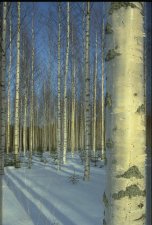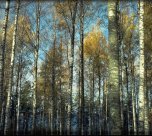Scientific Programme
The philosophy of the Action is based on a close co-operation and interaction between experts and professionals in the different disciplines of forestry. Further wood specialists and experts on biodiversity will be consulted where necessary. Co-operation with forest- and landowners, farmers, forest owners associations, nature conservation experts, political decision-makers and other stakeholders will be established.
Demonstration plots representing different management scenarios will be established, so that they are distributed on various locations in Europe on adequate sites in both agricultural landscape and forest rich regions. The unique conditions of each region and landscape type are to be taken into account when determining where the plots should be situated. The demonstration plots show examples for different management options and visualise effects of spacing on crown architecture, mixture of tree species, plant material and site requirements, pruning and quality control, volume growth control, thinning and final cutting systems and how to optimise the production.
Scientific Areas
The detailed, thematic issues that will be researched are:
- Methods, ways and means of growing highly valuable timber from valuable broadleaved trees with the shortest possible production times.
- Identification of value relevant wood properties
- Stand establishment (site requirements, planting strategies, spacing, species mixture, selection of species and genetic material). Example: Specific trees on specific sites
- Selection of future crop trees: selection criteria, timing
- Site and species related growth dynamics including height growth and crown architecture
- Quality growth; diameter growth and control (natural and artificial pruning, thinning regimes, single tree management and methods, stem form development)
- Volume growth per hectare
- Different regeneration practices and final cutting systems
- Aesthetic values: New emerging ideas will be tested and the implementation on different landscape levels (from seed orchard to road side, from single-tree management to group to forest stand) displayed.
- Public perception: Testing new management ideas for forestry in urban areas. Here biodiversity, sensitive ecosystems and nature conservation are included in the process.
- Examples of non-wood goods and services that can be suitable for simultaneous production with the forest management regimes for valuable wood production.
- Birchbark handicraft (Fin: "tuohi")
- Birchsugar extraction (xylitol) and sapping for birch juice
- Mushroom cultivation on tree stumps and through symbiosis with host trees
- Berry and fruit picking and cultivation (fruits from trees: e.g. cherry; berries from ground vegetation)
- Collecting plants or parts of plants for herbal infusions (e.g. tea from Tilia sp.)
- Apiculture (blossoms of lime trees or wild cherry trees)
- Other wooden products that could be promoted:
- Burled wood silviculture for small scale forestry with birch
- Wooden handicrafts (instruments, tool making and other smaller items)
- Increased use of wood for building and furniture manufacturing purposes
- Charcoal manufacture (with low quality wood and thick branches)
- Wood chip production for heating and energy (with low quality wood and both thicker and thinner branches and twigs)
Some of the ideas mentioned here may also be a subject for a doctoral thesis or STSMs.
Other Activities
While working on achieving the objectives stated in this Action, it is important to keep in mind, which target groups are relevant and consult them, or their representatives, directly.
- Experts will be consulted, benefits and drawbacks of different scenarios discussed. Geneticists, experts on fungi, pests and diseases, market specialists (veneer industry), biodiversity specialists will be invited to the Working Group meetings.
- Experts on horticulture, apiculture, wood chip production, handicrafts and traditional trades will be consulted in their area of expertise to determine to what extent the ideas and proposals can be tested and put into practice. The economic dimension of each idea will be discussed and evaluated.
It will be considered to what extent practices used in different countries should be the base of the development of new practices.
The database and the methods to be applied will be discussed during the initial phase of the Action. The effects of different treatments such as thinning, pruning, final cutting systems and techniques for regeneration will be analysed based on empirical data. Data sources will be measurements in selected forests and long term experimental plot data contributed by scientists and institutes involved in the Action. The data of standing trees include: height, diameter, length of the branch free bole, measurements on crown architecture, stand density etc.
Additionally, stem analysis data will be used which provide retrospective information on annual radial increment at different heights of the stem and annual height increment. Stem analysis may as well provide information about past artificial and natural pruning. Only in selected cases new data will be collected in the field according to standardised methods. This data also provides information about the effect of various treatments on wood quality, which is essential for producing high quality wood.
Action expired on 2nd November 2008.
Please find the action's final report here


